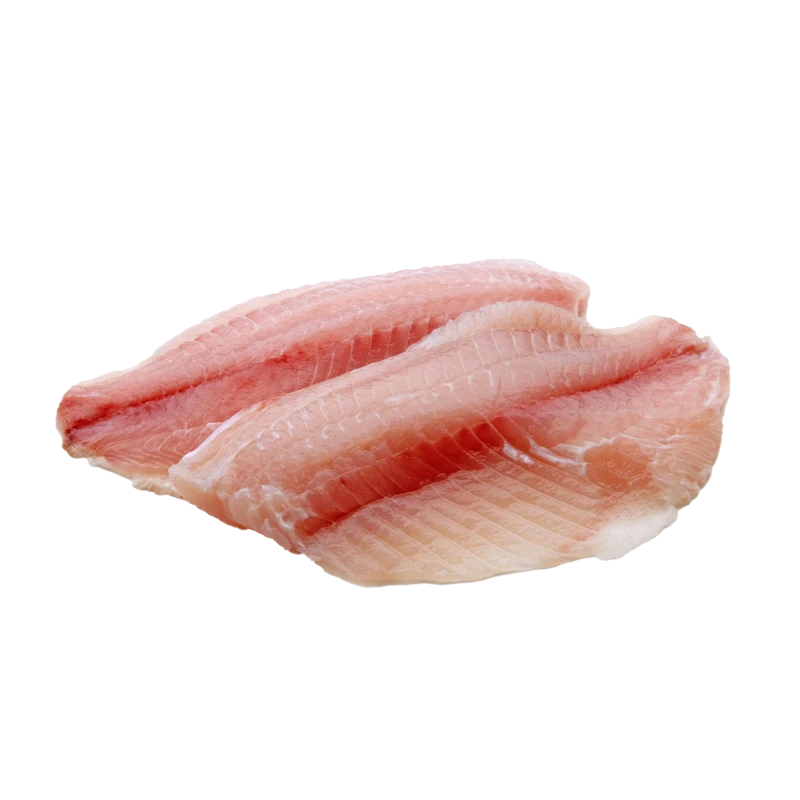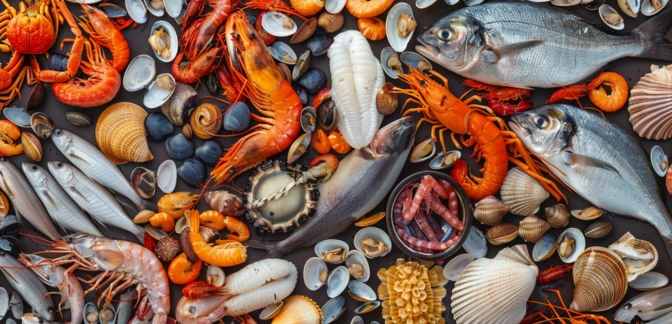Fish — Nutrients, Health Benefits, And Shopping Tips

Written by Listonic Team
Last update on September 6, 2024
Nutrition facts
Nutrition facts
Amount per 100 g
Calories
🔥 206 kcal
| Nutrition per: 100 g | Value | % Daily Value* |
|---|---|---|
| Carbs | 0 g | - |
| Fiber | 0 g | - |
| Sugars | 0 g | - |
| Glycemic Index | 0 | - |
| Protein | 22 g | 44% |
| Sodium | 60 mg | 2.61% |
| Total Fat | 12 g | 15.38% |
*The % of Daily Value (DV) tells you how much a nutrient in a serving of food contributes to a daily diet. 2,000 calories a day is used for general nutrition advice.
22 g
💪 High Protein Content
Did you know?
Health benefits
- High in protein, essential for muscle growth, repair, and overall body function.
- Rich in omega-3 fatty acids, which support heart health, reduce inflammation, and improve brain function.
- Contains essential vitamins and minerals such as Vitamin D, Vitamin B12, iodine, and selenium, which support overall health and well-being.
- Supports eye health due to the presence of omega-3 fatty acids and Vitamin A (in fatty fish), which help maintain good vision.
- May improve mood and mental health by reducing symptoms of depression and anxiety due to its omega-3 content.
Health risks
- Risk of mercury contamination particularly in larger or predatory fish, which can pose health risks, especially for pregnant women and young children.
- Potential for allergic reactions in individuals with fish allergies, causing symptoms like itching, swelling, or anaphylaxis.
- Risk of contamination with harmful bacteria, parasites, or toxins, particularly in raw or undercooked fish, leading to potential foodborne illness.
- Environmental concerns related to overfishing and unsustainable fishing practices, which can impact marine ecosystems and lead to species depletion.
How to choose fish
Good quality fresh fish has bright, clear eyes and red gills. The skin should be shiny and moist. Press the flesh; it should spring back quickly.
Reject any fish with a fishy or sour smell, which is a clear indicator of age. Fresh fish should smell like the ocean and have firm, unblemished skin.

How to store fish
Fresh fish should be stored in the refrigerator and used within one to two days. Wrap it in plastic wrap or place in an airtight container to keep it fresh. Freezing fish can extend its shelf life up to three months.
Fish left exposed to air can develop a strong odor and lose its texture. It is essential to keep it away from other strong-smelling foods. Proper sealing will maintain its freshness and flavor.
✅ Extra Tip
How long does it last?
Fish can last for 1-2 days in the refrigerator when stored in an airtight container. For longer storage, fish can be frozen for up to 6-8 months. Proper packaging, such as vacuum-sealing, helps maintain its quality over longer storage periods.
What to do with leftovers?
Leftover fish can be used in a variety of dishes. Flake it and add to salads for a light and flavorful meal, or mix it into a pasta dish with a light sauce. Fish is also great in fish cakes, where it can be combined with breadcrumbs, eggs, and seasonings, then fried until golden.
Use fish in a stir-fry with vegetables and rice, or add it to a fish stew with tomatoes and herbs. If you have a lot of fish, consider making a batch of fish tacos, topped with slaw and a tangy sauce. Fish can also be used as a filling for sandwiches or wraps with fresh greens and a squeeze of lemon. For a unique twist, try using flaked fish in a quiche or frittata for a savory breakfast or brunch.
👨⚕️️ Medical disclaimer
Discover products from other categories
Listonic Team
Fact-checked
Our editorial team checked this article to make sure it was accurate at the time of publishing it.
Get the top-rated shopping list app on your phone!







